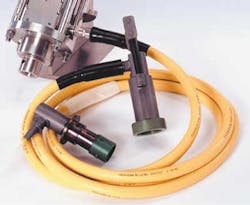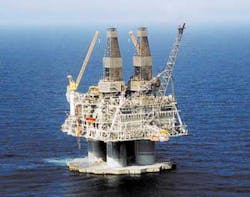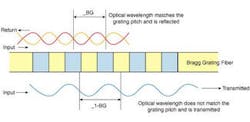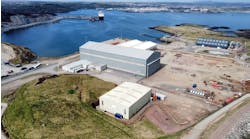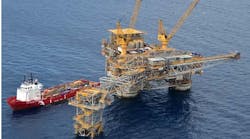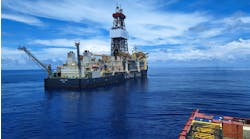PRODUCTION TECHNOLOGY: Extending tieback distances to shore industry's next major objective
The industry development program, in conjunction with R&D, resulted in the development of the Wet-Mate Hybrid Connector, which uses telecommunications grade connections providing face-to-face contact between each pair of mated fibers in a pressure-balanced, benign, silt-free environment.
The key to the use of new oil and gas exploration and production technologies is to start with the end in mind. It's hard to justify using more expensive systems on a straight replacement basis alone. Operators have to look at the project's total system cost over the life of the field.
For most subsea installation scenarios, the economics of subsea production can be improved by making use of leading edge technologies that focus on advanced facilities construction, production control, and flow assurance. These technology developments are not only critical to the improved economic development of deepwater (>500 meters) prospects where much of today's industry focus lies, but also for technical success in ultra-deepwater, as we pass the 2,000 meter contour. They are also relevant for extending the life of facilities and infrastructure in shallow water mature regions such as the continental shelves of the US Gulf of Mexico and UK North Sea sector.
The implementation of new technology will only move forward if accompanied by suitable and in-depth risk assessment and risk management. Although the implementation of new technology will always carry an associated risk, the level of risk can be reduced and kept within acceptable limits through proven engineering and management practices, the application of system-wide qualification test programs, and detailed production trials. This approach to the implementation of new technology has been successfully proven on a number of recent high-profile developments.
The following sections, after the background summary, will look at a variety of technologies critical to the ongoing development of the subsea oil industry and which are dependant on the use of wet-mate, high-power connectors (or optical connectors). These developments can be grouped into five broad categories:
- Production control and flow assurance for increased tieback distance
- Topside facilities reduction through subsea processing
- Increased production through improved monitoring
- Deepwater installation.
- Tieback to shore (a possible future for subsea).
Recent history
The need to provide sufficient space for process trains and other equipment, i.e., produced water handling, power generation, etc., led the offshore industry to build some of the most massive constructions anyone has ever seen, and then move them en mass or piecemeal to their final location. We only need to look at the Hibernia platform offshore Newfoundland or some of the earlier massive concrete structures installed in the North Sea
As tieback distances increase and topside facilities are replaced by subsea infrastructure, the need for electrical power will be greater than ever. The use of high-power electrical connection systems offshore has been, to this point, limited. However, reliable, user-friendly subsea interconnect products are a necessary enabling technology for any advancements in subsea processing or power distribution (Ocean Design develops high-power, subsea mateable connectors).
Optical communication has been in use subsea since 1985. The first fiber-optic transatlantic telecommunication cable was laid in 1988. Since then, enough fiber has been laid subsea to reach the moon and back - twice.
In 1994, the offshore oil industry kicked-off a program to develop all of the technology necessary to the installation and operation of a 100 km unrepeated optical communications link. This link had to support communication for at least one subsea control system and provide topside access for optical communication.
An industry development program resulted in the development of the Wet-Mate Hybrid Connector, which uses telecommunications grade connections providing face-to-face contact between each pair of mated fibers in a pressure-balanced, benign, silt-free environment. The connector first saw commercial installation in the Southern North Sea in January 1997.
Since then, more than 800 hybrid and optical wet-mate connectors have been delivered. They have proven to be an enabling or critical component on many of the most advanced production systems that have been tested or installed subsea since 1997. They are currently in operation at depths down to 20,000 ft.
Tieback distances
The addition of a "Bragg Grating" to the fiber converts that section of the fiber to a point sensor where any external effect that causes a change in length of the fiber grating, i.e., temperature, pressure, strain, etc., can be detected.
Flow assurance is the ability to produce and transport multi-phase fluids from the reservoir to a processing center with a high availability. The primary flow assurance concerns are the formation of paraffin and hydrate deposits under specific flow conditions, as well as the management of scale and sand.
This becomes critical when a flowline is shut in. The formation of deposits is a dynamic process, being dependant upon a number of variables including hydrostatic pressure, flow temperature, fluid constituents, and chemicals usage.
The difficulties escalate as we move further down the slope. As tiebacks continue to lengthen, the distance itself creates difficulty with power supply and electrical communication, where signal attenuation in copper can cause transmission difficulties after a distance of 10-20 km is surpassed. Optical fiber based communication using single-mode fiber is capable of supporting communications greater than 200 km without the need to regenerate the optical signal.
Reservoir pressure alone is unlikely to be sufficient to provide flow assurance, so in addition to the normal methods of reservoir pressure maintenance through water injection and primary flow assistance through gas lift, we are seeing an increased usage of electric submersible pumps (ESPs). The operational lifetime for ESPs is currently around two years from installation. Ongoing pump, motor, and downhole cable developments are continuing to extend operational lifetimes.
In deepwater and for very long tiebacks, the pressure boost from ESPs may not be sufficient. Over the last 10 years, the offshore industry has been developing a number of single phase and multiphase subsea pump systems. The use of multiphase pumps allows pressure to be added to an unprocessed well stream, which creates a number of applications and benefits for the operator, including increased:
- Tieback distance for satellite fields
- Well drawdown for accelerated production
- Recovery from deepwater fields.
Monitoring the temperature of the flowline can provide an early warning for onset of material deposition in the annulus, offering the opportunity to take remedial action before a blockage occurs. One option for temperature monitoring is through use of an optical fiber distributed temperature sensor (DTS). This can be a permanent or temporary installation, with at least one end of the fiber being accessible topside.
One continuing development that will see use in deepwater is the all-electric christmas tree. As installation depths increase, the effectiveness and the cost benefit of direct hydraulic and electro-hydraulic control systems falls off. We are now reaching depths where direct electric actuation of valve systems is becoming a requirement.
The valve actuators will need moderate power supplies, possibly through step-down transformers from a high-voltage supply system. As usual, the christmas tree will need to remain an independently retrievable module, so there will be a requirement to provide wet-mate moderate-to-high power connectors at the interface to the tree.
If the option to use valve blocks capable of being changed out by remotely operated vehicles (ROVs) progresses, then there will be an additional requirement to provide an ROV-operable wet-mate moderate power connector at each retrievable valve block interface.
Subsea processing
One of the major limiting factors with new topside facilities and the expansion of production through existing platforms is the available space and the weight of process equipment that can be supported. The need to provide sufficient space for process trains and other equipment - produced water handling, power generation, etc. - led the offshore industry to build some of the most massive constructions anyone has ever seen, and then move them en-mass or piecemeal to their final location. One technically feasible means of significantly reducing topside load is to place the primary separator on the seabed (or even downhole).
Over the last few years, a number of advances in industrial sensing have reached the point where they are compatible with being re-engineered for subsea or downhole use. The main application for these technologies is in thermal mapping of a well and in placing a "distributed fiber geophone" for continuous drawdown reservoir mapping in the wellbore.
Two technologies are either in trial or are scheduled for production trials in the next few months. Both of these use optical fiber as the sensor and both offer distributed sensing. The optical fiber is also the communication medium back to the surface, via a system of wet-mate optical connectors, jumpers, and an umbilical/riser carrying an optical fiber cable element.
The addition of a "Bragg Grating" to the fiber converts that section of the fiber to a point sensor where any external effect, which causes a change in length of the fiber grating (temperature, pressure, strain, etc.) can be detected. A Bragg Grating is a small section of fiber encoded with a modulated transmission profile or grating.
The grating will reflect a light signal where the wavelength of the light incident on the grating is equal to the pitch of the grating. The grating is transparent to wavelengths that do not match the grating pitch. This allows gratings with different pitches to be added in series to a length of fiber creating a distributed sensor.
An optical fiber DTS can provide permanent thermal mapping of downhole temperatures along the whole length of a vertical or horizontal well or for temperature distribution along a flowline in real time. They provide fast, accurate temperature sensing through a flexible sensor cable without disturbing the thermal environment or interrupting production.
There are a number of other small passive discrete sensors that use optical measurement techniques and can be interrogated over optical fiber. They have potential applications in equipment monitoring, providing pressure, temperature, shock, vibration, current, and other measurements, and can be multiplexed onto an optical fiber bus network, offering fault tolerant operation with very high sensor availabilities.
Deepwater installation
In the past five years, more than 3.2 billion bbl of oil reserves have been discovered in the Gulf of Mexico in deepwater tracts, many of which are too expensive to develop with present technology. These deepwater tracts harbor an estimated 15 billion bbl or more.
Production in deepwater and ultra-deepwater will be ever more dependant on subsea systems, but in the near future at least, there will continue to be a requirement for a surface production facility, even if this facility is scaled down through the use of subsea processing. The surface facilities will continue to use a range of installation options, from FPVs, semisubmersibles, and SPARs to tension leg platforms and lightweight compliant towers.
Industry standards for the use of composite materials are currently under review. One critical area where composites are expected to play a major role in the very near future is in the suspended loads carried by the platform.
Tiebacks to shore
The "Holy Grail" for the offshore industry has long been the ability to tieback an offshore reservoir or region to a land-based facility. Recent studies indicate that this may be feasible out to distances greater than 200 km. In many cases, this would significantly reduce or completely eliminate the need for a permanent offshore surface facility. It is occasionally a useful exercise to think of what this industry may be capable of in 5-10 years. Many of the technologies discussed above could come together in an installation providing tieback to shore.
Through the use of "new" technology and the provision of high-power and high-bandwidth communication using wet-mate high-power and optical connectors, reservoir engineering will be changed forever. It will no longer be just a predictive science based on occasional floods of data, but will be capable of providing a reservoir engineer in a central location with a desktop interface to view and actively manage in real-time, the wells providing draw down of a reservoir offshore, say, Angola.
The emphasis behind the development of these subsea production, process, and flow assurance technologies has always been to improve the life-of-field economics of offshore developments. As we continue to follow the discovery of viable oil reserves into ever deeper waters, or try to make marginal fields economic, field development will only go forward if we can find a means of reducing life-of-field costs below currently achievable levels. The use of cutting edge technology offers the opportunity to significantly reduce these costs.
Authors
Thomas A. Romanisko, P.E., is serving as Senior Applications Engineer, developing optimal solutions for subsea networking. Also, he is a high power specialist and serves as program manager for high power products. He holds a BS in Mechanical Engineering from Penn State (Pennsylvania, US).
Perry J. Wright has worked as the fiber optics technology manager for Ocean Design, Inc., covering the manufacture of the fiber optic connector product lines (including the wet mate hybrid connector), and a range of other optical fiber-based products. He holds an MS in Marine Technology and a BS (hons) in Laser Physics.
Editor's Note: This is an updated and summarized version of OTC 13235, presented at the Offshore Technology Conference in Houston, Texas in May 2001.

